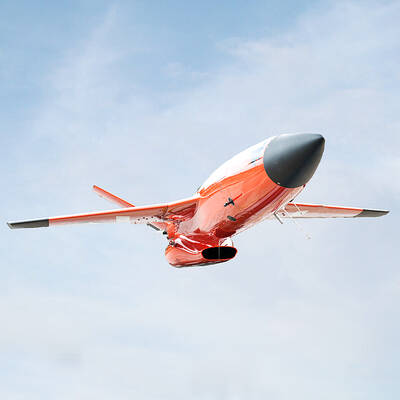California is proposing to add solar power to a million homes in the next 10 years, paid for by a surcharge on electricity bills equivalent to about US$0.27 a month.
The plan, proposed by the California Environmental Protection Agency (EPA), is intended to honor an election pledge of Governor Arnold Schwarzenegger to ensure that half of all new homes in the state are built with solar power facilities.
The surcharge would raise US$1 billion in 10 years for the installation program, with the state using the money to give rebates to home builders who install solar panels on new homes, and incentives for installing panels on existing homes.
Homeowners would be able to reduce their power bills and even make money by selling "unused" solar energy back to the electricity companies via two-way meters.
Electricity supply has been a sensitive issue since the energy crisis in 2001 when a free-for-all market pushed prices so low that many stations shut down leaving the state short of power. Solar power became more popular.
According to the California Energy Commission, while 900 photovoltaic systems were installed from 1998 to 2000, more than 11,000 systems were installed from 2001 to the middle of last year.
Most of the changes were to older properties, but with 150,000 new homes being built a year the greater potential led to a campaign for the state to use its "greatest asset" -- sunshine.
Tim Coyle, the senior vice president of the California Building Industry Association, said home systems could cost from US$17,000 to US$20,000 and would not pay for themselves as customers would typically pay US$120 a month to repay the purchase price and then receive about US$70 in "returns" in electricity generated.
The state grants are designed to make the system pay.
According to the draft plan, "each month the homeowner will save more money in reduced electricity charges than [will be paid] on the solar mortgage."
Together the solar installations would equal 36 new, 75-megawatt natural gas plants, and would avoid adding millions of tonnes of carbon dioxide into the air a year.

‘WIN-WIN’: The Philippines, and central and eastern European countries are important potential drone cooperation partners, Minister of Foreign Affairs Lin Chia-lung said Minister of Foreign Affairs Lin Chia-lung (林佳龍) in an interview published yesterday confirmed that there are joint ventures between Taiwan and Poland in the drone industry. Lin made the remark in an exclusive interview with the Chinese-language Liberty Times (the Taipei Times’ sister paper). The government-backed Taiwan Excellence Drone International Business Opportunities Alliance and the Polish Chamber of Unmanned Systems on Wednesday last week signed a memorandum of understanding in Poland to develop a “non-China” supply chain for drones and work together on key technologies. Asked if Taiwan prioritized Poland among central and eastern European countries in drone collaboration, Lin

The Chien Feng IV (勁蜂, Mighty Hornet) loitering munition is on track to enter flight tests next month in connection with potential adoption by Taiwanese and US armed forces, a government source said yesterday. The kamikaze drone, which boasts a range of 1,000km, debuted at the Taipei Aerospace and Defense Technology Exhibition in September, the official said on condition of anonymity. The Chungshan Institute of Science and Technology and US-based Kratos Defense jointly developed the platform by leveraging the engine and airframe of the latter’s MQM-178 Firejet target drone, they said. The uncrewed aerial vehicle is designed to utilize an artificial intelligence computer

Renewed border fighting between Thailand and Cambodia showed no signs of abating yesterday, leaving hundreds of thousands of displaced people in both countries living in strained conditions as more flooded into temporary shelters. Reporters on the Thai side of the border heard sounds of outgoing, indirect fire yesterday. About 400,000 people have been evacuated from affected areas in Thailand and about 700 schools closed while fighting was ongoing in four border provinces, said Thai Rear Admiral Surasant Kongsiri, a spokesman for the military. Cambodia evacuated more than 127,000 villagers and closed hundreds of schools, the Thai Ministry of Defense said. Thailand’s military announced that

CABINET APPROVAL: People seeking assisted reproduction must be assessed to determine whether they would be adequate parents, the planned changes say Proposed amendments to the Assisted Reproduction Act (人工生殖法) advanced yesterday by the Executive Yuan would grant married lesbian couples and single women access to legal assisted reproductive services. The proposed revisions are “based on the fundamental principle of respecting women’s reproductive autonomy,” Cabinet spokesperson Michelle Lee (李慧芝) quoted Vice Premier Cheng Li-chiun (鄭麗君), who presided over a Cabinet meeting earlier yesterday, as saying at the briefing. The draft amendment would be submitted to the legislature for review. The Ministry of Health and Welfare, which proposed the amendments, said that experts on children’s rights, gender equality, law and medicine attended cross-disciplinary meetings, adding that